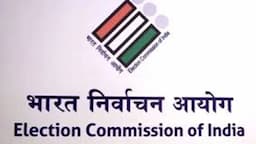India’s mental health crisis is at a critical juncture. With the World Health Organization (WHO) listing depression as the leading cause of disability worldwide, and India accounting for a significant portion of global mental health issues, the urgency to address this challenge has never been greater.
Yet, despite this alarming situation, India’s mental health infrastructure remains underfunded and stretched thin. According to the Ministry of Health and Family Welfare, the country has less than one psychiatrist for every 100,000 people, a glaring shortfall in a nation where mental health conditions are rising rapidly.

While the Mental Healthcare Act of 2017 marked a significant step forward in recognizing the rights of those struggling with mental illnesses, implementation gaps still persist. The urban-rural divide is stark—urban centers have better access to mental health services, leaving rural and marginalized communities underserved.
In these areas, stigma, misconceptions, and cultural barriers further discourage people from seeking the care they need. Public awareness campaigns have begun to make a difference, especially in cities, but their reach in rural regions remains limited, underscoring the need for more localized, culturally sensitive interventions.
On a more promising note, the pandemic spurred a rise in telepsychiatry, offering new hope for bridging access gaps. Virtual consultations have made mental health support more accessible for millions, particularly in remote areas, although challenges like connectivity issues and concerns over the quality of virtual care still need to be addressed.
To have deeper insights into these pressing issues, Education Post’s Prabhav Anand spoke with Dr. Archana Narendra Javadekar, a leading Professor of Psychiatry at Dr. D. Y. Patil Medical College, Hospital, and Research Center, Pimpri, Pune. In this interview, Dr. Javadekar shared valuable insights on the state of mental healthcare in India, the evolving role of psychiatry, and the critical need to integrate holistic and community-based approaches into the mental health system.
Q. In recent years, we’ve seen a sharp rise in mental health issues globally, with the WHO reporting that depression is now the leading cause of disability worldwide. Despite this, mental health services in India remain largely underfunded and understaffed. How do you assess the current state of mental healthcare infrastructure in India, especially in terms of accessibility and quality of care?
The mental healthcare infrastructure in India is indeed facing significant challenges. Despite growing awareness around mental health, accessibility remains limited, particularly in rural and underserved areas. Many people struggle to get help due to stigma, long distances and financial constraints. Additionally, our healthcare system lacks sufficient professionals and facilities to cater to the growing demand. However, the introduction of initiatives like the Mental Healthcare Act, 2017, has been a positive step towards ensuring more rights for individuals suffering from mental illness. But we still have a long way to go in terms of implementing policies effectively, providing accessible care and improving the quality of mental health services. The focus should be on integrating mental health into primary healthcare and training more frontline workers in mental health basics to bridge this gap.
Q. One of the ongoing criticisms of psychiatry is the over-reliance on pharmaceutical interventions, sometimes at the expense of holistic treatment approaches. Given your extensive experience, how do you balance medication with therapy and other alternative treatments, and do you believe the field of psychiatry is evolving sufficiently to include more integrative approaches?
One of the key aspects of modern psychiatry is understanding that mental health is deeply intertwined with both biological and psychosocial factors. While medications play a crucial role in managing severe conditions like schizophrenia or bipolar disorder, we also recognize that they are not the only solution. As a psychiatrist, I believe it is essential to combine medication with therapy and other integrative approaches like lifestyle changes, mindfulness practices and family support systems. There's growing recognition in the field that holistic care, which takes into account a patient's environment, relationships and daily habits, can lead to better long-term outcomes. Thankfully, psychiatry is evolving and we are seeing a shift towards more integrative approaches, although more awareness and training in these areas are still needed.
Q. India has a staggering shortage of mental health professionals, with less than one psychiatrist per 100,000 people, according to the Ministry of Health and Family Welfare. What steps should be taken at a policy level to address this gap, and do you believe enough is being done to attract young doctors into the field of psychiatry.
The shortage of mental health professionals is a critical issue and it's something that needs urgent attention at the policy level. First, we need to invest more in mental health education and awareness right from the mid school level to encourage more students to consider psychiatry as a viable career. Offering scholarships and incentives, especially for those willing to work in rural areas, could help address the geographical disparities in care. We also need to promote task-sharing models where trained non-specialists can provide basic mental health care, freeing up psychiatrists to focus on more complex cases. While there have been efforts to improve access to mental health services, such as the District Mental Health Program, we need much more robust, long-term investments in training and infrastructure to make a lasting impact.
Q. Despite significant advancements in mental health awareness, stigmatization remains a major barrier, particularly in rural areas where mental health is often misunderstood. In your view, how effective have public awareness campaigns been in changing attitudes, and what more can be done to reduce the stigma surrounding mental illness, especially in underserved communities?
Public awareness campaigns have undoubtedly played a crucial role in reshaping attitudes toward mental health, raising awareness about conditions, symptoms and treatment options. These efforts, especially through digital media, have helped normalize conversations around mental health, making it more accessible and less taboo for many. However, despite these strides, stigma remains pervasive, particularly in rural and underserved areas, where mental health issues are often clouded by cultural misconceptions or a lack of understanding.
To address this gap, it is essential to localize awareness efforts. Community-based campaigns, involving trusted local figures like teachers, community leaders and healthcare workers, can serve as more credible sources of information. Educational sessions held in local languages and aligned with community values can help demystify mental health issues in a way that feels authentic. Integrating mental health education within primary healthcare services in these areas could bridge the information gap, allowing individuals to seek help without fear of judgment.
Q. Telepsychiatry has gained momentum during the pandemic, with many experts hailing it as a breakthrough in expanding access to mental healthcare. However, concerns about the quality of virtual care, especially for serious conditions, have also been raised. What are your thoughts on the potential and limitations of telepsychiatry, and do you see it becoming a permanent feature in the Indian mental healthcare landscape?
Telepsychiatry has indeed opened doors to mental healthcare for millions in India, addressing critical barriers such as geographical distance, availability of professionals and social stigma. By providing a way for patients to consult psychiatrists and counselors remotely, it has made mental health support more accessible. However, telepsychiatry comes with limitations. The lack of in-person cues, such as body language and facial expressions, can make it challenging for professionals to fully assess and respond to their patients, particularly in cases of severe mental illness. Also, the absence of hands-on physical support can make it difficult to build the same level of therapeutic trust. Furthermore, connectivity issues in rural areas can disrupt consultations and data privacy remains a concern for many patients who may hesitate to use virtual platforms. Despite these challenges, I believe telepsychiatry will continue to play a vital role in India's mental healthcare landscape. With ongoing advancements in digital technology and data protection, many of the current limitations could be alleviated.
Q. Critics have pointed out that mental health care in India often focuses more on urban and affluent populations, leaving rural and marginalized communities behind. What are the unique mental health challenges faced by these underserved populations, and what strategies do you think are necessary to bridge this urban-rural divide in mental healthcare delivery?
Mental health care in India shows a strong urban bias, leaving rural and marginalized communities underserved. These populations face unique mental health challenges influenced by socioeconomic and cultural factors. Poverty, lack of education and social stigma around mental illness often exacerbate mental health issues in rural areas. Additionally, mental health conditions are frequently misunderstood or associated with superstitions, leading to further alienation and reluctance to seek help. The scarcity of trained mental health professionals in rural regions makes access to quality care even more difficult, leaving many individuals without essential support.
Bridging this urban-rural divide in mental healthcare delivery requires a culturally sensitive and multi-layered approach. First, we must empower community health workers and primary healthcare providers with basic training in mental health care. This would help in recognizing symptoms, providing initial counseling and referring patients to specialized care when needed. Given that community health workers are familiar faces within these areas, they can help reduce the stigma surrounding mental illness and foster a supportive environment for seeking help.
Localized mental health campaigns are also crucial for raising awareness and dispelling myths around mental health. Involving local leaders, educators and religious figures to discuss mental health openly can help normalize these conversations within rural communities. Collaborating with NGOs and local organizations can further amplify these messages, ensuring they resonate with the unique social and cultural contexts of underserved communities. Integrating mental health care within the primary healthcare infrastructure will make it more accessible and reduce the need for specialized centers, which are often lacking in rural areas. With these strategies, mental health care in India can move toward a more inclusive model that bridges the gap between urban and rural populations, bringing support to those who need it most.



.jpg&w=3840&q=75)











